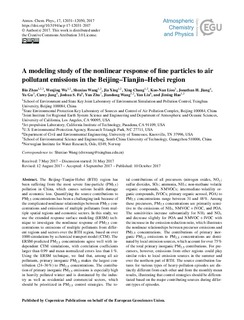| dc.contributor.author | Zhao, Bin | |
| dc.contributor.author | Wu, Wenjing | |
| dc.contributor.author | Wang, Shuxiao | |
| dc.contributor.author | Xing, Jia | |
| dc.contributor.author | Chang, Xing | |
| dc.contributor.author | Liou, Kuo-Nan | |
| dc.contributor.author | Jiang, Jonathan H. | |
| dc.contributor.author | Gu, Yu | |
| dc.contributor.author | Jang, Carey | |
| dc.contributor.author | Fu, Joshua | |
| dc.contributor.author | Zhu, Yun | |
| dc.contributor.author | Wang, Jiandong | |
| dc.contributor.author | Lin, Yan | |
| dc.contributor.author | Hao, Jiming | |
| dc.date.accessioned | 2018-07-31T13:17:29Z | |
| dc.date.available | 2018-07-31T13:17:29Z | |
| dc.date.created | 2018-01-26T12:31:32Z | |
| dc.date.issued | 2017 | |
| dc.identifier.citation | Atmospheric Chemistry and Physics. 2017, 17 (19), 12031-12050. | nb_NO |
| dc.identifier.issn | 1680-7316 | |
| dc.identifier.uri | http://hdl.handle.net/11250/2507024 | |
| dc.description.abstract | The Beijing–Tianjin–Hebei (BTH) region has been suffering from the most severe fine-particle (PM2:5) pollution in China, which causes serious health damage and economic loss. Quantifying the source contributions to PM2:5 concentrations has been a challenging task because of the complicated nonlinear relationships between PM2:5 concentrations and emissions of multiple pollutants from multiple spatial regions and economic sectors. In this study, we use the extended response surface modeling (ERSM) technique to investigate the nonlinear response of PM2:5 concentrations to emissions of multiple pollutants from different regions and sectors over the BTH region, based on over 1000 simulations by a chemical transport model (CTM). The ERSM-predicted PM2:5 concentrations agree well with independent CTM simulations, with correlation coefficients larger than 0.99 and mean normalized errors less than 1 %. Using the ERSM technique, we find that, among all air pollutants, primary inorganic PM2:5 makes the largest contribution (24–36 %) to PM2:5 concentrations. The contribution of primary inorganic PM2:5 emissions is especially high in heavily polluted winter and is dominated by the industry as well as residential and commercial sectors, which should be prioritized in PM2:5 control strategies. The total contributions of all precursors (nitrogen oxides, NOx ; sulfur dioxides, SO2; ammonia, NH3; non-methane volatile organic compounds, NMVOCs; intermediate-volatility organic compounds, IVOCs; primary organic aerosol, POA) to PM2:5 concentrations range between 31 and 48 %. Among these precursors, PM2:5 concentrations are primarily sensitive to the emissions of NH3, NMVOCCIVOC, and POA. The sensitivities increase substantially for NH3 and NOx and decrease slightly for POA and NMVOCCIVOC with the increase in the emission reduction ratio, which illustrates the nonlinear relationships between precursor emissions and PM2:5 concentrations. The contributions of primary inorganic PM2:5 emissions to PM2:5 concentrations are dominated by local emission sources, which account for over 75% of the total primary inorganic PM2:5 contributions. For precursors, however, emissions from other regions could play similar roles to local emission sources in the summer and over the northern part of BTH. The source contribution features for various types of heavy-pollution episodes are distinctly different from each other and from the monthly mean results, illustrating that control strategies should be differentiated based on the major contributing sources during different types of episodes. | nb_NO |
| dc.language.iso | eng | nb_NO |
| dc.publisher | European Geosciences Union | nb_NO |
| dc.rights | Attribution 3.0 Unported (CC BY 3.0) | * |
| dc.rights.uri | https://creativecommons.org/licenses/by/3.0/ | * |
| dc.title | A modeling study of the nonlinear response of fine particles to air pollutant emissions in the Beijing-Tianjin-Hebei region | nb_NO |
| dc.type | Journal article | nb_NO |
| dc.type | Peer reviewed | nb_NO |
| dc.description.version | publishedVersion | nb_NO |
| dc.rights.holder | © Author(s) 2017 | nb_NO |
| dc.source.pagenumber | 12031-12050 | nb_NO |
| dc.source.volume | 17 | nb_NO |
| dc.source.journal | Atmospheric Chemistry and Physics | nb_NO |
| dc.source.issue | 19 | nb_NO |
| dc.identifier.doi | 10.5194/acp-17-12031-2017 | |
| dc.identifier.cristin | 1552700 | |
| dc.relation.project | National Science Foundation of China: 21625701 | nb_NO |
| dc.relation.project | National Science Foundation of China: 21521064 | nb_NO |
| dc.relation.project | MOST National Key R & D program: 2016YFC0207601 | nb_NO |
| dc.relation.project | Strategic Pilot Project of Chinese Academy of Sciences: XDB05030401 | nb_NO |
| dc.relation.project | UCLA Sustainable Los Angeles Grand Challenge 2016: YZ-50958 | nb_NO |
| dc.relation.project | Jet Propulsion Laboratory, California Institute of Technology | nb_NO |
| cristin.unitcode | 7464,30,23,0 | |
| cristin.unitname | Nedbørfeltprosesser | |
| cristin.ispublished | true | |
| cristin.fulltext | original | |
| cristin.qualitycode | 2 | |

